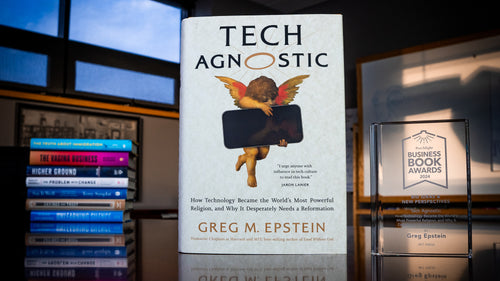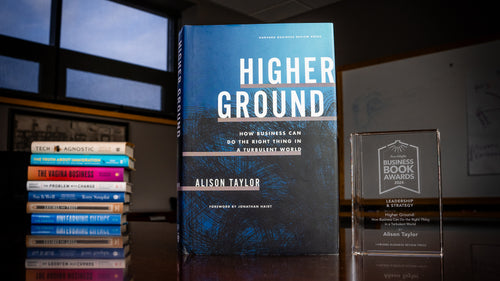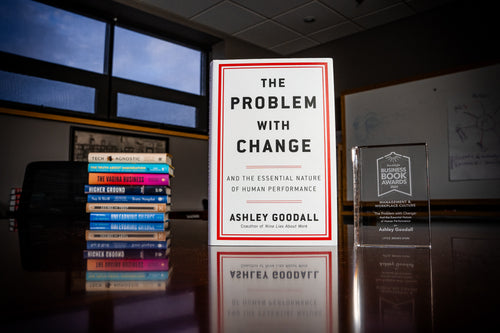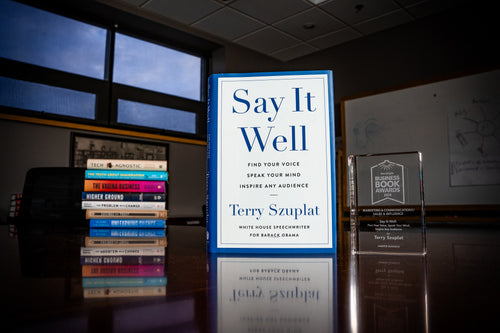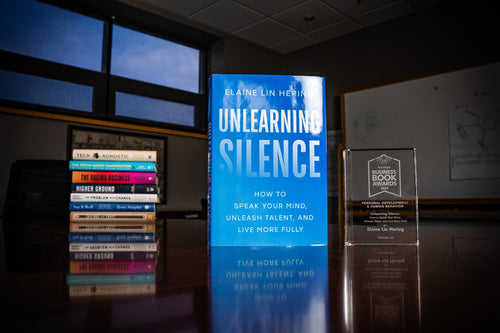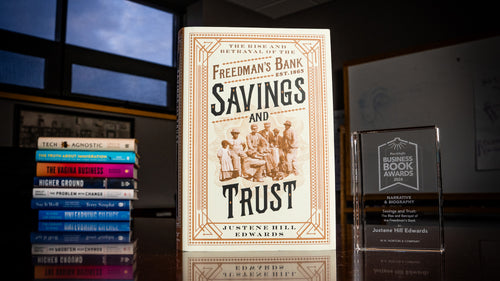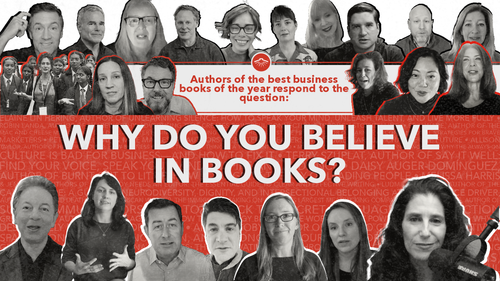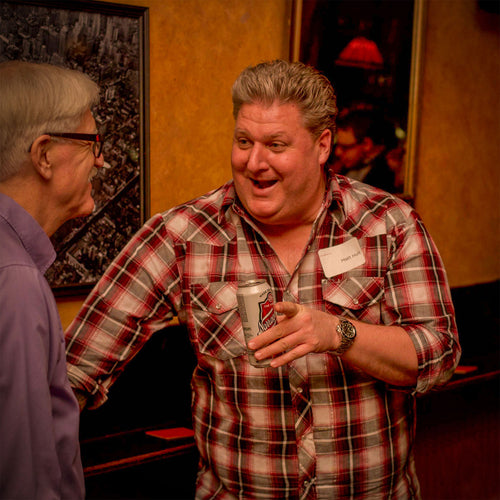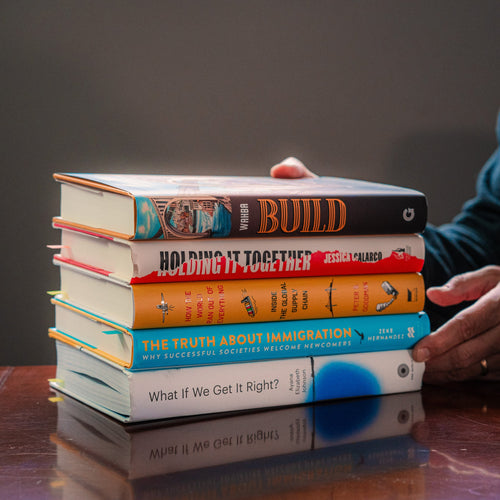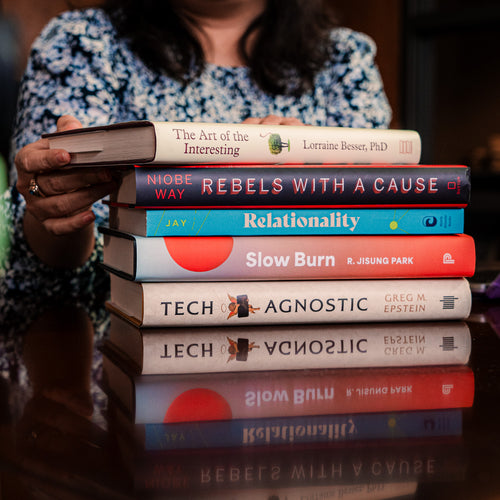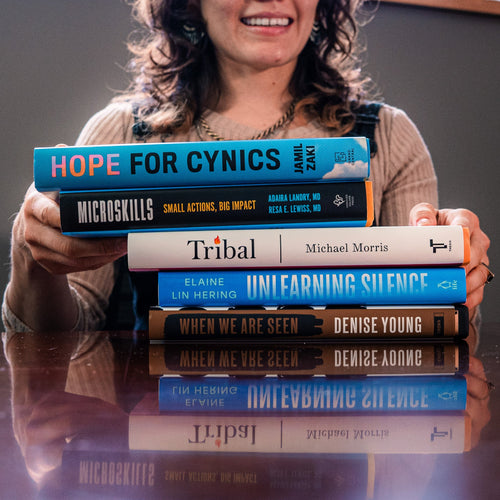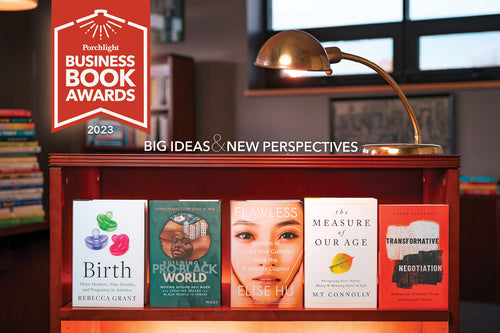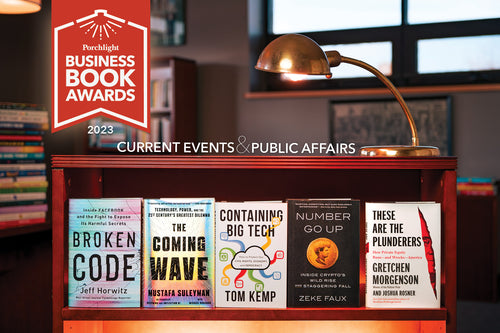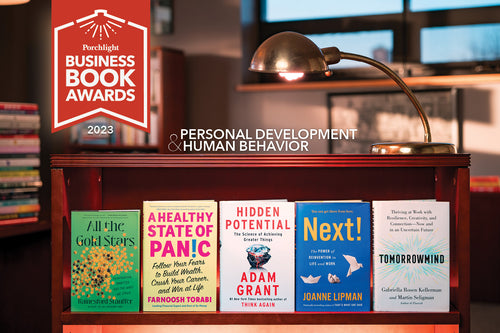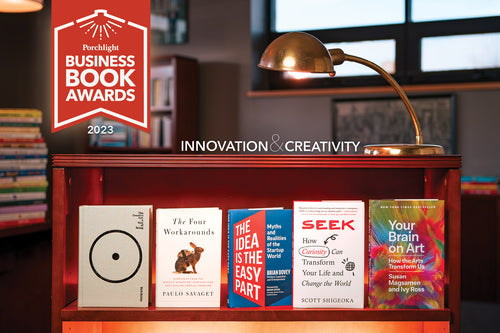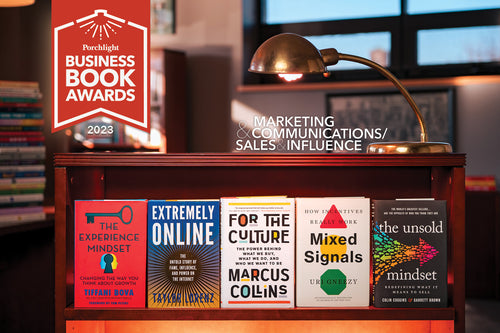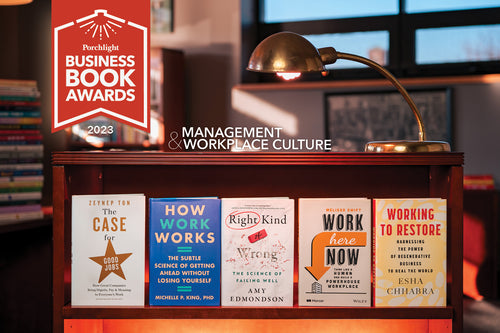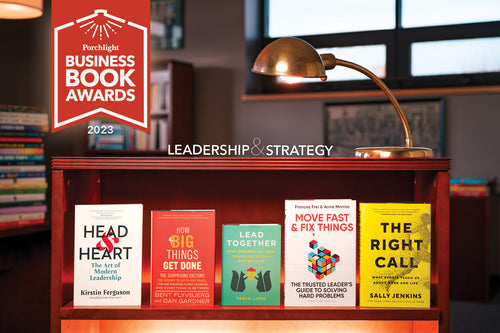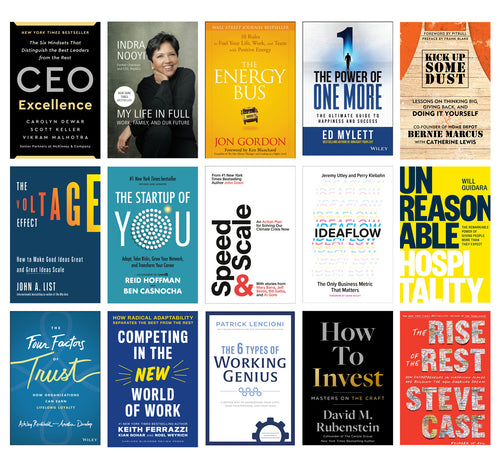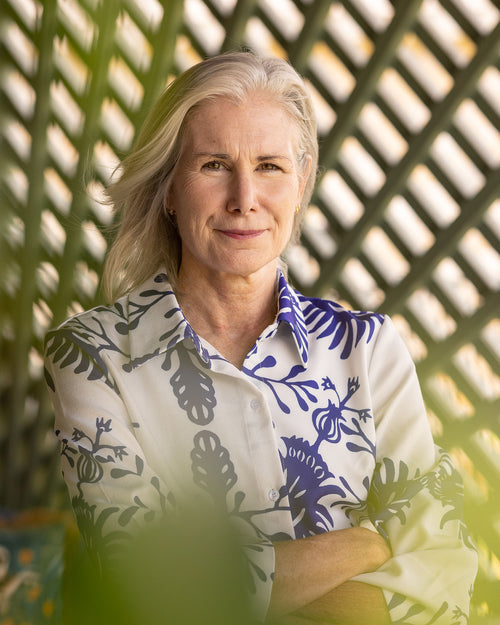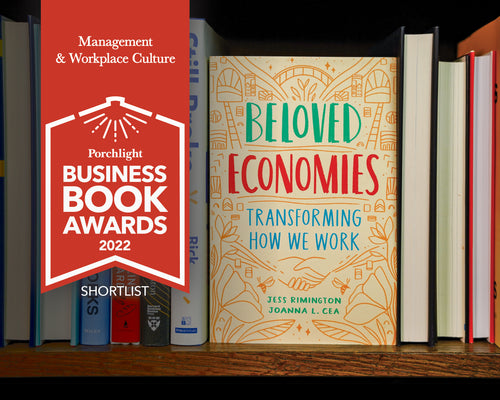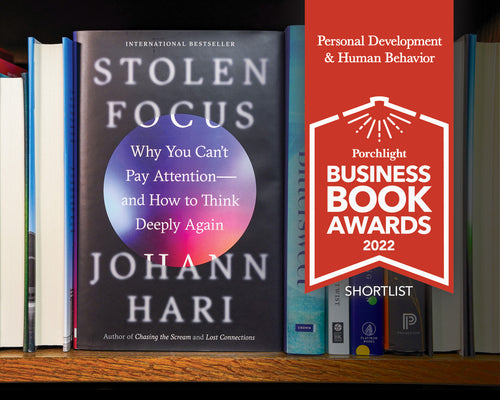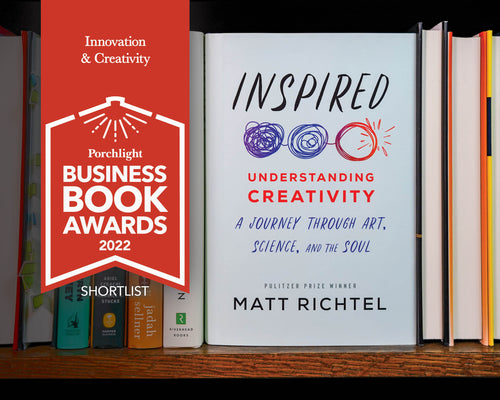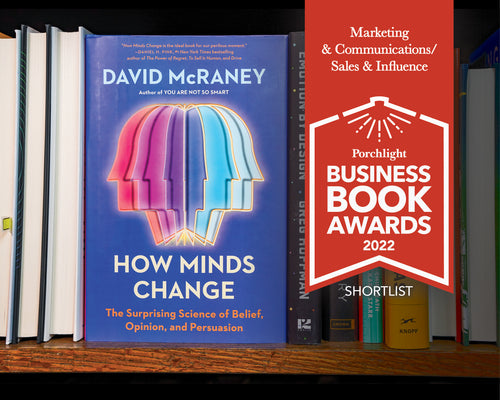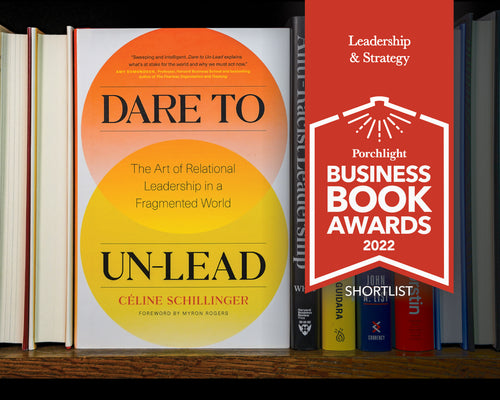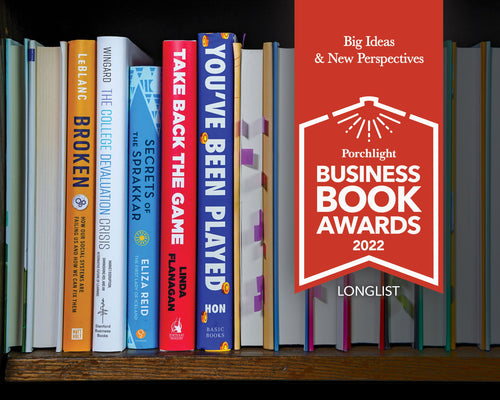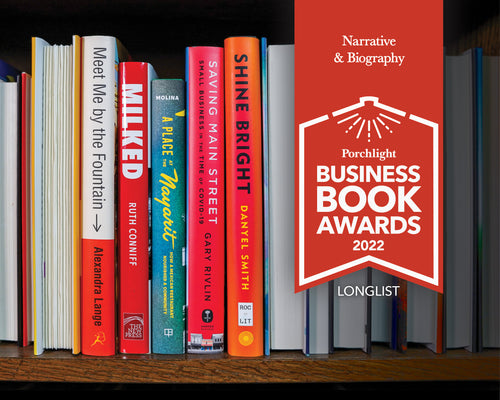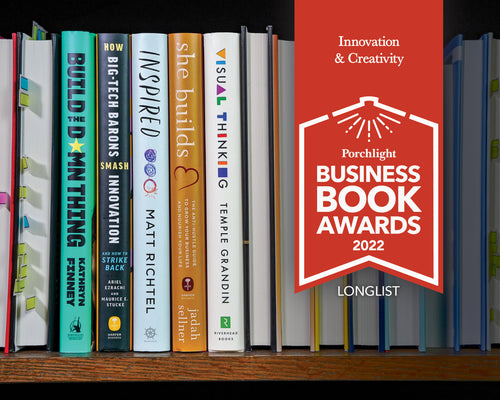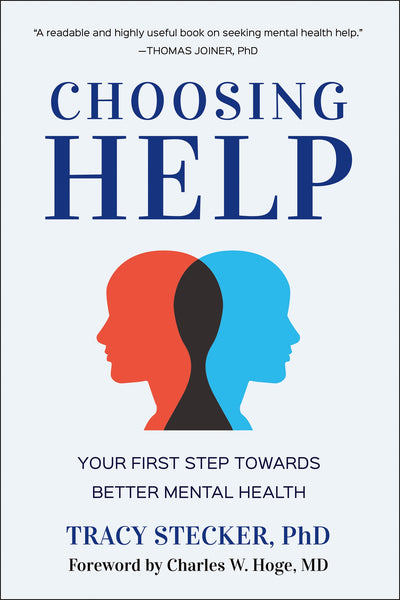Anthro-Vision | An Excerpt from the 2021 Porchlight Management & Workplace Culture Book of the Year
The 2021 Porchlight Management & Workplace Culture book of the Year is Anthro-Vision: A New Way to See in Business and Life by Gillian Tett.
Businesses are quick to embrace analytical tools wherever they can find them, but what tools can we use when analyzing what is arguably the most important aspect of any company, its culture? Peter Drucker once opined that "culture eats strategy for breakfast," yet reliable, real-world tools for analyzing and improving the cultural and social environments we work in are still hard to find. Gillian Tett offers one that has been hiding in plain sight: the lens of anthropology, the study of human culture. Culture is not something that exists in a spreadsheet. To understand and analyze it requires face-to-face, human observation and interaction. Rather than a burden, after almost two years of social distance that sounds like a blessing.
“At a time when AI is taking over our lives,” Tett writes, “we need to celebrate what makes us human.” To dive into these ideas further, the following excerpt comes from the Preface of the book, which introduces us to The Other "AI"—Anthropology Intelligence.
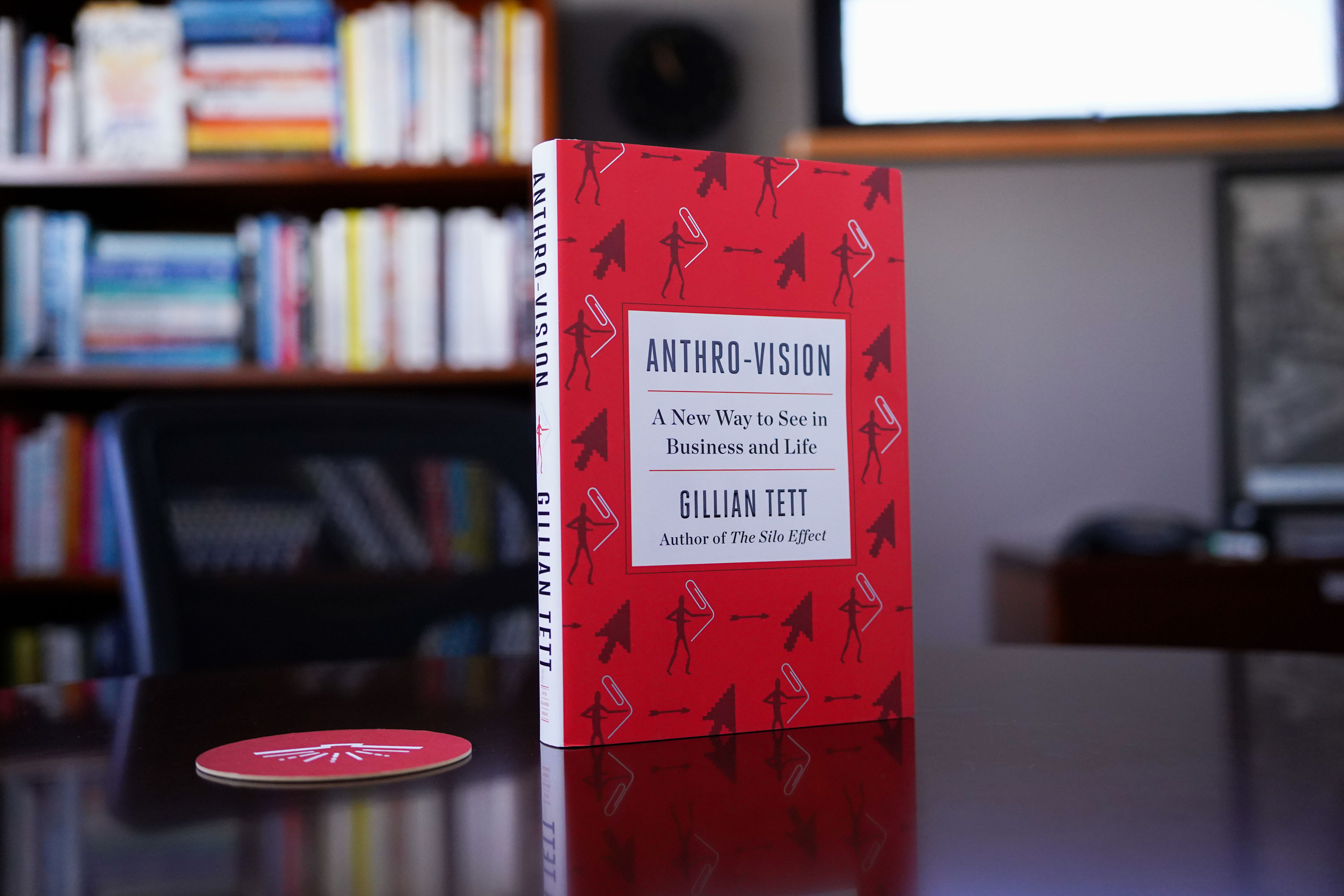
I sat in a drab Soviet hotel room in May 1992. Gunfire rattled the windows. Across the room, on a bed with a nasty brown blanket, sat Marcus Warren, a British journalist. We had been trapped in the hotel for hours, as battles raged on the streets outside in Dushanbe, the capital city of Tajikistan. We had no idea how many had died.
“What did you do in Tajikistan before?” Marcus asked me, as we nervously listened to the fighting. Until a year earlier this mountainous country, bordering Afghanistan, had seemed a permanent and peaceful part of the Soviet Union. But in August 1991 the Soviet regime had collapsed. That dissolution had propelled the country to independence and sparked a civil war. Marcus and I were there as reporters, respectively for the Daily Telegraph and the Financial Times.
But my background was weird. Before I joined the Financial Times, I had been based in Tajikistan doing research for a PhD in anthropology, that oft ignored (and sometimes derided) branch of the social sciences that studies culture and society. Like generations of earlier anthropologists, I had engaged in fieldwork, which meant immersing myself in a high mountain village a three-hour bus ride from Dushanbe. I lived with a family. The aim was to be an “insider-outsider,” to observe the Soviet villagers at close quarters and study their “culture” in the sense of their rituals, values, social patterns, and semiotic codes. I explored questions such as: What did they trust? How did they define a family? What did “Islam” mean? How did they feel about Communism? What defined economic value? How did they organize their space? In short: What did it mean to be human in Soviet Tajikistan?
“So what exactly did you study?” Marcus asked.
“Marriage rituals,” I replied.
“Marriage rituals!” Marcus exploded, hoarse from exhaustion. “What the hell is the point of that?” His question masked a bigger one: Why would anyone go to a mountainous country that seemed weird to Westerners and immerse herself in an alien culture to study it? I understood his reaction. As I later admitted in my doctoral thesis: “With people dying outside on the streets of Dushanbe, studying marriage rituals did sound exotic—if not irrelevant.”
This book has a simple aim: to answer Marcus’s question—and show that the ideas emanating from a discipline that many people think (wrongly) studies only the “exotic” are vital for the modern world. The reason is that anthropology is an intellectual framework that enables you to see around corners, spot what is hidden in plain sight, gain empathy for others, and fresh insight on problems. This framework is needed more than ever now as we grapple with climate change, pandemics, racism, social media run amok, artificial intelligence, financial turmoil, and political conflict. I know this from my own career: as this book explains, since I left Tajikistan, I have worked as a journalist and used my anthropology training to foresee and understand the 2008 financial crisis, the rise of Donald Trump, the 2020 pandemic, the surge in sustainable investing, and the digital economy. But this book also explains how anthropology is (and has been) valuable for business executives, investors, policy makers, economists, techies, financiers, doctors, lawyers, and accountants (yes, really). These ideas are as useful in making sense of an Amazon warehouse as in an Amazon jungle.
Why? Many of the tools we have been using to navigate the world are simply not working well. In recent years we have seen economic forecasts misfire, political polls turn out to be wrong, financial models fail, tech innovations turn dangerous, and consumer surveys mislead. These problems have not arisen because those tools are wrong or useless. They are not. The problem is such tools are incomplete; they are used without an awareness of culture and context, created with a sense of tunnel vision, and built assuming that the world can be neatly bounded or captured by a single set of parameters. This might work well when the world is so stable that the past is a good guide to the future. But it does not when we live in a world of flux, or what Western military experts describe as “VUCA,” short for “volatility, uncertainty, complexity, and ambiguity.” Nor when we face “black swans” (to cite Nassim Nicholas Taleb), “radical uncertainty” (as the economists Mervyn King and John Kay say), and an “uncharted” future (to quote Margaret Heffernan).
Or to put it another way, trying to navigate the twenty-first-century world only using the tools developed in the twentieth-century, such as rigid economic models, is like walking through a dark wood with a compass at night and only looking down on the dial. Your compass may be technically brilliant and tell you where to aim. But if you only focus on the dial, you may walk into a tree. Tunnel vision is deadly. We need lateral vision. That is what anthropology can impart: anthro-vision.
This book offers extensive ideas about how to gain anthro-vision, using personal and third-party stories that explore questions such as: Why do we need offices? Why do investors misread risks? What matters to modern consumers? What should economists learn from Cambridge Analytica? What is driving green finance? How should governments Build Back Better? How does culture interact with computers? Before plunging into the details, however, there are three core principles of the anthropology mindset that are the most important to grasp, and which shape the structure of this book. The first idea is that in an era of global contagion, we urgently need to cultivate a mindset of empathy for strangers and value diversity. Anthropologists are experts in this since the discipline was founded around the goal of venturing to far-flung places to study seemingly “exotic” peoples. That creates a whiff of Indiana Jones. But that tag is misleading. “Exotic” is in the eye of the beholder since every culture can seem strange to another and nobody can afford to ignore what seems strange in a globalized world (or dismiss other cultures as “shitholes,” as former president Donald Trump did). Flows of finance, commerce, travel, and communication connect us, creating constant contagion, involving not just germs but money, ideas, and trends. However, our understanding of others has not expanded at the same pace as our interconnections. That creates risks and tragically missed opportunities. (Chapter Three explains that if only Western policy makers had bothered to learn some lessons from “strange” countries in West Africa or Asia, they would never have fallen prey to the COVID-19 pandemic.)
The second key principle of anthropology is that listening to someone else’s view, however “strange,” does not just teach empathy for others, which is badly needed today; it also makes it easier to see yourself. As the anthropologist Ralph Linton observed, a fish would be the last person to see water; it is easier to understand people in contrast to others. Or to cite an idea developed by another anthropologist, Horace Miner: “Anthropology alone amongst the sciences strives to make the strange familiar and the familiar strange.” The aim is to increase our understanding of both.
Third, embracing this strange-familiar concept enables us see blind spots in others and ourselves. Anthropologists are almost like psychiatrists, but instead of putting individuals on the couch, they place groups of people metaphorically under their lens, to see the biases, assumptions, and mental maps that people collectively inherit. Or, to use another metaphor, anthropologists use an X-ray machine to look at society, to see half-hidden patterns we are only dimly aware of. This often shows us that even if we think “x” is the reason why something has happened, it might actually be “y.”
[…]
The book that follows is divided into three parts, which echo the three principles outlined above: the need to make the “strange familiar,” to make the “familiar strange,” and listen to social silence. The narrative arc is my own tale: what I learned about studying “strange” in Tajikistan (Chapter One); how I used those lessons to explore the “familiar” in the City of London and Financial Times (Chapter Four); and later uncovered social silences in Wall Street, Washington, and Silicon Valley (Chapters Seven, Eight, and Ten.) But the book also relates how anthropology has helped companies such as Intel, Nestlé, General Motors, Procter& Gamble, Mars, or Danica, among others, and how anthropology also sheds light on policy problems such as how to handle a pandemic, frame the economics of Silicon Valley, develop digital work, and embrace the sustainability movement. If you are just looking for practical answers to modern problems, skip to later chapters; however, the early chapters outline where these intellectual tools arise from.
Three caveats. First, this book does not argue that anthro-vision should replace other intellectual tools, but complement them. Just as adding salt to food binds the ingredients and enhances flavor, adding anthropological ideas to disciplines such as economics, data science, law, or medicine creates a deeper, richer analysis. Blending computing and social science should be a particular priority today. Second, I would not pretend that these ideas are just found in the academic discipline of anthropology; some crop up in user-experience research (USX) studies, social psychology, linguistics, geography, philosophy, environmental biology, and behavioral science. That is good: academic boundaries are artificial, reflecting university tribalism.* We should redraw them for the twenty-first century. Whatever word you use to describe anthro-vision, we need it.
Third, this is not intended as a memoir. I only use my own tale as a narrative arc for a specific intellectual purpose: since anthropology is defined less by a single theory than its distinctive way of looking at the world, the easiest way to explain this mode of thought is to relate what anthropologists do. I hope my own story will illuminate this by addressing three questions: why should a study of Tajik wedding rituals prompt someone to look at modern financial markets, tech, and politics? Why does this matter for other professionals? And in a world being reshaped by artificial intelligence, why do we need another “AI,” namely anthropology intelligence? The last issue lies at the heart of this book.
*Many anthropologists hate using words such as “tribe” and “tribalism,” since they can sound pejorative, and do not reflect the more technical meaning these words have in relation to kinship structures. Fair point. But for ease of communication, I employ the words “tribe” and “tribalism” in the book, in the popular sense.
Excerpted from Anthro-Vision: A New Way to See in Business and Life. Copyright © 2021 by Gillian Tett.
Reprinted with permission of Avid Reader Press. All rights reserved.
ABOUT THE AUTHOR
Gillian Tett chairs the editorial board, US, for the Financial Times and writes columns for the world’s leading newspaper covering finance, business, and the political economy. She has been named British Journalist of the Year, Columnist of the Year, and Business Journalist of the Year in the UK and won two Society for Advancing Business Editing and Writing awards in the US. She speaks regularly at conferences around the world on finance and global markets and has a PhD in social anthropology from Cambridge University. Tett is the author of Saving the Sun: How Wall Street Mavericks Shook Up Japan’s Financial World and Made Billions, Fool’s Gold: The Inside Story of J.P. Morgan and How Wall St. Greed Corrupted Its Bold Dream and Created a Financial Catastrophe, and The Silo Effect: The Peril of Expertise and the Promise of Breaking Down Barriers.

